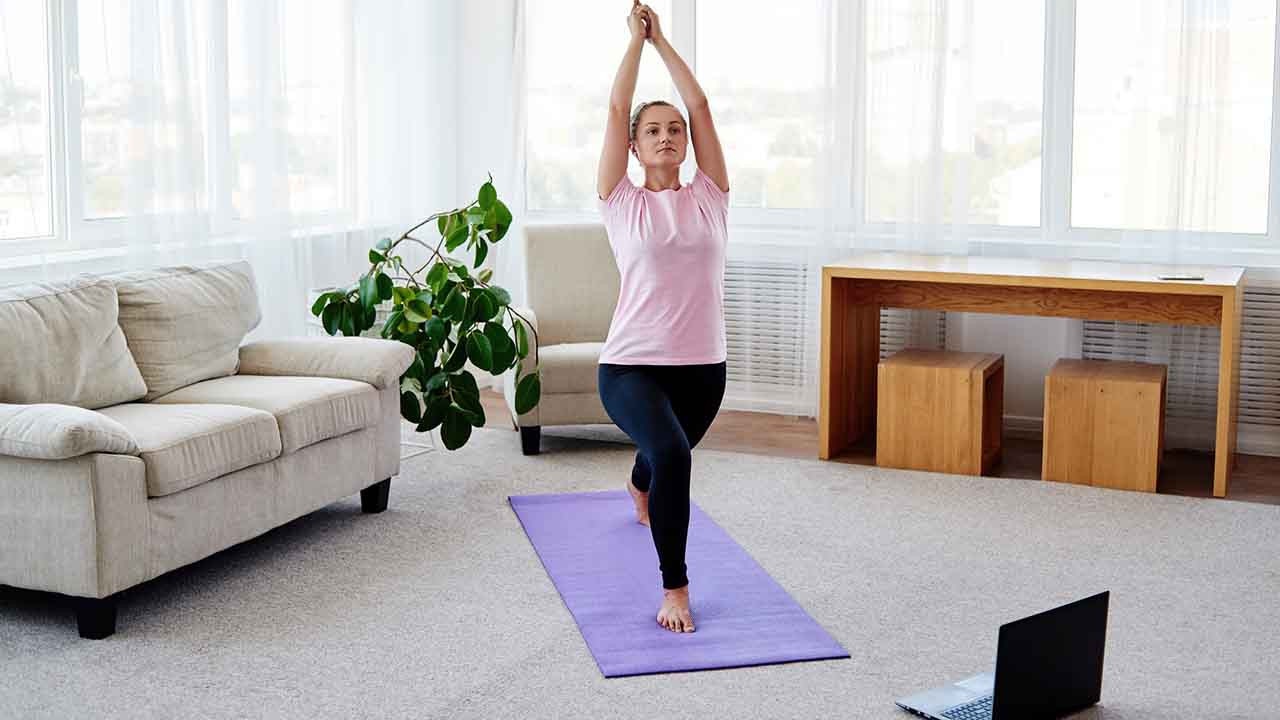Getting The Most Out Of Your Home Workouts

Doing workouts and practicing yoga at home provide awesome opportunities to get your body moving, but home-based training can also come with obstacles. Here's how to get the most out of your home workouts.
The pros of getting moving at home
Sorting your own workouts and yoga sessions at home is a great way to get your body moving. A few of the benefits of doing this include:
- It's convenient
- No travel time to get to and from a gym, yoga studio or training session
- Easier to do bite-sized shorter training sessions
- You can work around your life easier, for example, doing it together with children, no childcare required, you're not restricted by gym or studio opening hours
- Can quickly and easily jump in the shower afterwards without having to pack a gym bag of stuff for it
Because of all the above, this also means that if you can get a home-based routine on track, you're likely to get moving more frequently which helps you make faster progress for quicker and/or better results.
Obstacle: Distractions around the house
It can be difficult to get started with a workout with the washing pile in the corner of the lounge and the dirty dishes in the next room over. You may also find it tricky to train if you have other people around such as children, and often pet dogs or cats like to join in. Here are some tips:
- Try to exercise in a space free of distractions.
- Get children to join you so you can get moving together.
- If you have kids and you prefer to have your space, have activities and snacks ready for them before you get started.
- Ditto for the pets (or embrace them getting in your space!).
- Set the days and times for your sessions in your calendar as you would an appointment. Don't set yourself up for failure; make sure you take into consideration the other activities going on each day and what time you prefer to exercise. This is important if you lead a busy life, and even more important if you're generally home all the time and set your own schedule.
Obstacle: Space and gear
Training at home typically means you don't have a lot of room to work with or much gear available. This isn't a problem - you can still do an awesome fitness workout or yoga practice using just the space of a mat, and with no equipment.
That said, if you want to up your game, adding extra weight to your fitness sessions through the use of dumbells or a lower budget option like tin cans of food or old milk bottles filled with water can be a great solution.
For yoga, you don't need much - most yoga poses you can do without any gear, but you can make many of them more accessible by having on hand a yoga strap (you can sub this for a regular belt or a towel) and a yoga blanket (can also be a regular thick blanket or a thin pillow).
Obstacle: Not having to get out the door
While this is a benefit of training at home, it can also be an issue. Taking that first step out the door is usually the hardest part for most people, but once that step is done it sets the wheels in motion to continue to the gym, studio or fitness session past the point of no return (i.e. you probably won't go to a destination for your training and just spend 5 minutes there, give up then come home).
There has to be a certain degree of commitment to do it at home and not procrastinate. So make that commitment; as we mentioned above, set a time, put it in your diary and stick to it. If it doesn't work for whatever reason, reschedule it within a reasonable timeframe.
Also, make things as easy for yourself as possible - lay out your exercise clothes in advance, prep your workout so you know what you're doing, have your training music ready if you need it. Set the atmosphere in your home so you're ready and good to go.
Obstacle: Finding the right level
Without an instructor or trainer right there with you in person, it can sometimes be difficult to know if you're doing an exercise correctly, whether you're pushing to challenge yourself enough, or if you need to scale it back to maintain good technique.
If you're using an online training video, pay close attention to any technique or alignment cues that are given. It can also help to do a practice workshop of some of the fundamentals such as squats, lunges, push ups and core connection as these form the basis for many movements. This will help make sure you're getting the most out of your session and that you're doing things correctly to help avoid injury.
The next thing to consider is how hard to push yourself. So many workouts push the pace, but there's no point in speeding up at the expense of your technique or you're likely to not be training as effectively could be plus you may end up injured! Pay attention to your body cues so that you're challenging yourself and going that little bit faster, perhaps that little bit deeper into the movement if you can.
If it's yoga you're into, the technique and alignment cues are super important too. Yoga is often considered to be a safe form of exercise, but pushing your body into a pose it's not ready for can also result in injuries.
If something doesn't feel right, don't keep pursuing it - back off, substitute it for a different exercise or pose, and find support from a professional who can talk you through your individual situation.
Image / DepositPhotos









